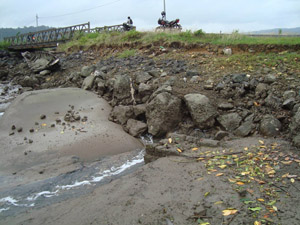THE LIGHT OF ANDAMANS | ISSUE 10-11 | 09 SEPTEMBER 2011
The Superficial Pakhwadas...
By Zubair Ahmed
There is no dearth of official days, weeks and fortnights in our country. There is Vanamahotsava Saptah, Vanyaprani Saptah, Women's Week, Anti-corruption Week and Hindi Pakhwara etc. etc. The less said about the intent, purpose and utility of these official functions the better. But on many an occasion some of these programmes prove a windfall as it gives an opportunity to really take a look into the intent of such extravaganzas.
I still don't understand why banners are hung in front of all government offices, when the insiders are supposed to use the language in their daily chores. And, it's truly a scare to approach offices where everything happens in Hindi, in its most intricate form. Once, my friend had to apply for a loan and he had cited circumcision of his brother. Unluckily, it was Hindi Pakhwara and he could not find a suitable Hindi term for circumcision. And, finally someone came for rescue and reframed the sentence which said - Mere bhai ki musalmani ke liye….
Our Islands have developed its own dialect of Hindi - a mix of Urdu and Hindi sans grammatical complications, which is popular and acceptable to all irrespective of their native states. A Telugu find it easy to communicate with a Malayali, however, for both the pristine Hindi is an alien language. A farmer in Diglipur has no need to feel "oneness" with a carpenter in Campbell Bay
It's natural that even after fifty-five years Hindi has not achieved the pride of place of the official language of the country. Infact, the protagonists of Hindi themselves are standing in the way of Hindi becoming first, the popular language and then the official language. There are two hurdles in the way of its becoming a common man's language, its grammar and the attempt to maintain its purity. Hindi will have to come down from its high pedestal by admitting as many words and phrases from other languages as the users like to introduce. Secondly, allowing the officials to use the common, simple Hindi in office notes and drafts. In course of time, the users will get polished and the quality of language will automatically improve. Somewhere, somebody has to make a beginning. In view of the present level of our official English - the sooner the better.







